Hazard Potential Classification Systems for Dams, FEMA 333
Hazard Potential Classification Systems for Dams, FEMA 333
Hazard Potential Classification Systems for Dams, FEMA 333
Create successful ePaper yourself
Turn your PDF publications into a flip-book with our unique Google optimized e-Paper software.
IV. DISCUSSION<br />
This <strong>Hazard</strong> <strong>Potential</strong> <strong>Classification</strong> System <strong>for</strong> <strong>Dams</strong> is based on the probable loss of human<br />
life and the potential <strong>for</strong> economic losses, environmental damage, and/or disruption to lifelines<br />
caused by failure of mis-operation of a dam or its appurtenances. This <strong>Hazard</strong> <strong>Potential</strong><br />
<strong>Classification</strong> System <strong>for</strong> <strong>Dams</strong> recognizes that the failure or mis-operation of any dam or waterretaining<br />
structure, no matter how small, represents a potential danger to downstream life and<br />
property. Whenever there is an uncontrolled release of stored water, there is always the<br />
possibility, regardless of how unexpected, of someone being in the path of the discharge.<br />
However, postulating every conceivable circumstance that might remotely place a person in the<br />
potential inundation zone should not be the basis <strong>for</strong> determining the appropriate classification<br />
level. This system considers improbable loss of life to exist where persons are only temporarily<br />
in the potential inundation area.<br />
The difference between the significant and high hazard potential classification levels is that a<br />
high hazard potential dam includes the probable loss of human life. The failure of a dam that is<br />
classified as a high hazard potential structure may or may not include adverse incremental<br />
consequences that would otherwise justify a significant hazard potential classification.<br />
The hazard potential classification assigned to a dam is based on consideration of the effects of a<br />
failure or mis-operation during both normal and flood flow conditions. The classification<br />
assigned should be based on the worst-case probable scenario of failure or mis-operation of the<br />
dam, i.e., the assigned classification should be based on failure consequences that will result in<br />
the assignment of the highest hazard potential classification of all probable failure and misoperation<br />
scenarios. Each element of a project must be evaluated to determine the proper hazard<br />
potential classification <strong>for</strong> the project. However, there is only one hazard potential classification<br />
assigned to the entire project. Individual elements are not assigned separate classifications.<br />
The probable scenarios considered should be reasonable, justifiable, and consistent with the<br />
Federal Guidelines <strong>for</strong> Dam Safety: Selecting and Accommodating Inflow Design Floods <strong>for</strong><br />
<strong>Dams</strong> (<strong>FEMA</strong>). For example, assuming reasonable breach parameters and a failure during<br />
normal operating conditions (“sunny day” failure) may result in the released water being<br />
confined to the river channel and no probable loss of human life, indicating a low hazard<br />
potential classification. However, if the dam were assumed to fail in a similar manner during a<br />
flood condition, and the result would be probable loss of human life (excluding the occasional<br />
passer-by or recreationist) but minor economic losses, a high hazard potential classification<br />
would be appropriate. Once a project is placed in the high hazard potential classification,<br />
additional probable failure or mis-operation scenarios need only be considered if there is a need<br />
to determine if they would likely induce higher adverse incremental impacts.<br />
In most situations, the investigation of the impact of failure or mis-operation of a dam on<br />
downstream human life, property damage, lifeline disruption, and environmental concerns is<br />
sufficient to determine the appropriate hazard potential classification. However, if failure or<br />
mis-operation of a dam contributes to failure of a downstream dam(s), the hazard potential<br />
7


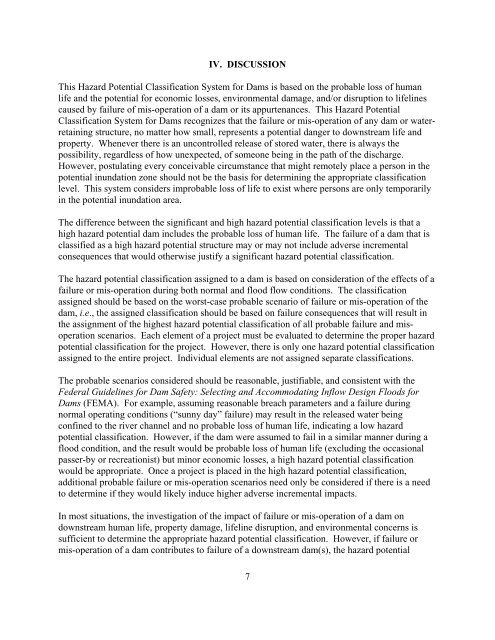


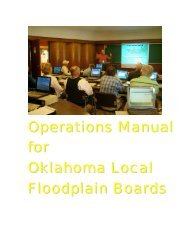
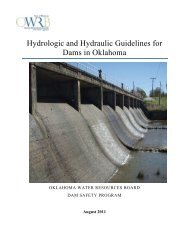


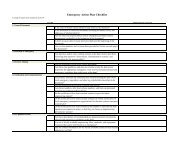




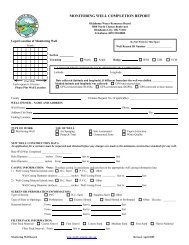
![A Commodity & a Resource [pdf] - Water Resources Board - State of ...](https://img.yumpu.com/42536671/1/190x143/a-commodity-a-resource-pdf-water-resources-board-state-of-.jpg?quality=85)

